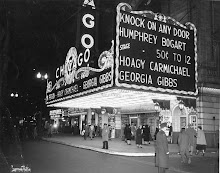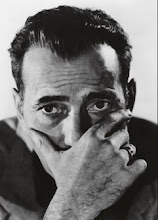With its semi-serious peek into the brave new world of industrial innovation, director Alexander Mackendrick's 1951 drama THE MAN IN THE WHITE SUIT succeeds in being both optimistic and fearful about the future.
Set in an unnamed town in the heart of Britain's now vanished textile industry, the film stars Alec Guinness as mild mannered scientist Sidney Stratton, inventor of a fabric that never gets dirty and never wears out. His employer, mill owner Alan Birnley (Cecil Parker) is initially ecstatic. Sidney's invention will make every other fabric obsolete and release millions from the drudgery of washing and ironing.
But Birnley's competitors and employees realise the fabric will destroy their industry and their livelihood and team up in an increasingly desperate attempt to smother Sidney's creation at birth.
THE MAN IN THE WHITE SUIT is a window on a way of life which existed just 60 years ago but now seems like 160 years ago. It's a world where people ended their sentences with "I'm sure," and used expressions like "You're talking through your hat." While some of the more radical workers talked about fighting for their rights they also knew their place in the class structure, which was just as well seeing as their employers had no interest in giving them a meaningful say in the running of their industry.
The film presents Sidney as hopelessly naive and altruistic while almost everyone else around him is focused on their own narrow self interests. But, viewed from today's perspective it's clear that those resisting his invention are equally naive. The mill owners confidence that they can control the future of their industry by force of their personality, and the workers' belief that they'll safeguard their jobs by destroying Sidney's invention is totally misplaced.
THE MAN IN THE WHITE SUIT was the fourth of five Ealing Comedies that Guinness was to make for the famous British studio between 1949 and 1955 and it's easily the slightest of the quintet. His character is shy and retiring to the point of fading into the wallpaper, and he's overshadowed by considerably more interesting and enjoyable performances from Parker and a magnificently wheezy Ernest Thesiger. Interesting but definitely not essential viewing.
02 October 2009
Subscribe to:
Post Comments (Atom)



No comments:
Post a Comment